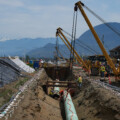In an effort to address Ontario’s housing affordability crisis, the Ford government recently passed a bill meant to spur homebuilding around the province. The government is also considering allowing development on certain Greenbelt lands surrounding the GTA.
Whatever your view on the government’s latest moves, everyone agrees there’s a problem. Ontario’s housing shortage is so painfully obvious that it’s just that—painful. Ask anyone looking to rent or buy their first home. At its root, it’s an issue of supply and demand; too few homes for too many would-be buyers and renters. When demand outpaces supply, prices rise.
If you prefer numbers, consider that in the 1970s roughly one home (on average) was built annually for every 1.2 new Ontarians compared to 2.4 new Ontarians in the most recent decade. In other words, the rate of new homes compared to new Ontarians is half what it was in the 1970s. Similarly, GTA rental vacancy rates averaged almost 3 percent in the 2000s but fell to less than 1.5 percent during the 2010s. No matter how you slice it, there aren’t enough homes to accommodate current and anticipated Ontarians. This is bad news for renters, buyers, and anyone looking to put down roots in Ontario. It’s also bad news for the economy, social cohesion, and the very idea of Ontario as an upwardly mobile society.
Which takes us back to the Ford government’s latest piece of housing legislation has passed—the More Homes Built Faster Act—and aims to markedly reduce both the number of regulatory hurdles homebuilders face and limit the power of local governments to block housing development.
The sweeping legislation allows up to three housing units “as-of-right” (that is, without rezoning) on single-family parcels provincewide, spares non-profit housing from development charges, refocuses the role of the Ontario Land Tribunal, curbs the power of conservation authorities, and exempts projects under 10 units from site plan approval (a major step in the development approval process). Time will tell whether these changes are sufficient, and indeed some argue they don’t go far enough. Regardless, the legislation represents a massive change to the way Ontario approves housing.
Unsurprisingly, these moves have come under fire from some municipal governments and city planners. By removing significant steps in the approvals process, or by exempting some homes from development fees, the province has diminished the power of city hall to shape growth and the revenue it can raise from it.
The Ford government’s other recent housing decision—to remove some lands from the Greenbelt while expanding it elsewhere—has also drawn the ire of conservationists, many of whom already opposed any reduction of conservation authority power over housing approvals.
Of course, some of these concerns may be valid, especially concerns about transparency; proper scrutiny of any government decision is necessary. However, Ontario’s housing crisis requires an appropriate response. If detractors feel the More Homes Built Faster Act does harm to local planning processes, they must also recognize the harm done by housing scarcity. If this legislation is insufficient or inappropriate, what alternatives do they offer to close the gap between supply and demand?
So far, it’s mostly radio silence.

The government’s new legislation, while imperfect, is a good step towards more housing development, which is key to increased affordability. However, if its reforms fall short and no one offers a viable alternative, Ontario will not achieve its housing targets, which all parties support. Rhetoric is easy. Without credible policy commitments, however, we won’t get meaningfully different outcomes.
Time will tell how this all plays out, but the important thing is progress. Ontario is long passed the stage of debating whether or not to change the way communities plan for and approve housing. Changes are overdue, and the Ford government has made some serious proposals. Any objectors to these proposals must offer constructive alternatives. In other words, they should explain how else Ontario can close the growing gap between the number of homes we need and the number available. Because unless that happens, housing in the province will remain out of reach for too many.
Recommended for You

Canada needs an effective fighting force, not another boondoggle

The one big takeaway from François Legault’s resignation: The Weekly Wrap

Forget becoming the 51st state—Canada needs the Turks and Caicos to become its 11th province

‘This is a national interest matter’: The case for a new pipeline just keeps getting stronger



